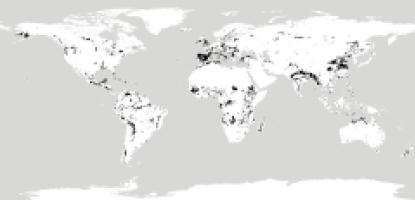|
Inceptisols
Inceptisols are a soil order in USDA soil taxonomy. They form quickly through alteration of parent material. They are more developed than Entisols. They have no accumulation of clays, iron oxide, aluminium oxide or organic matter. They have an ochric or umbric horizon and a cambic subsurface horizon. In the World Reference Base for Soil Resources (WRB), most Inceptisols are Cambisols or Umbrisols. Some may be Nitisols. Many Aquepts belong to Gleysols and Stagnosols. Suborders *Aquepts – with a water table close to the surface *Anthrepts – with a Plaggen soil, plaggen or anthrosol, anthropic wikt:epipedon, epipedon, a sign of intense and prolonged human activity *Gelepts – in very cold climates *Cryepts – in cold climates *Udepts – in humid climates *Ustepts – in semiarid and sub-humid climates' *Xerepts – in areas with very dry summers and moist winters References * * * {{Authority control United States Department of Agriculture Pedology Types of ... [...More Info...] [...Related Items...] OR: [Wikipedia] [Google] [Baidu] |
Anthrepts
In the USDA soil taxonomy, Anthrepts is a term for soil with evidence of human habitation and farming. See also *Anthrosols in the World Soil Classification. *Inceptisols of which anthrepts are a suborder of. References {{reflist Types of soil ... [...More Info...] [...Related Items...] OR: [Wikipedia] [Google] [Baidu] |
Nitisol
Nitisol, in the World Reference Base for Soil Resources (WRB), is a deep, red, well-drained soil with a clay content of at least 30% and a polyhedral structure or a blocky structure, breaking into a polyhedral or a flat-edged structure. The soil aggregates show pressure faces. Nitisols correlate with the kandic alfisols, ultisols and inceptisols of the USDA soil taxonomy. These soils are found in the tropics and subtropics; there are extensive areas of them in the tropical highlands of Ethiopia, Kenya, Democratic Republic of the Congo and Cameroon. Nitisols form from fine-textured material weathered from intermediate to basic parent rock and kaolinite, halloysite and iron oxides dominate their clay mineralogy. Nitisols are technically defined by a significant accumulation of clay (30 percent or more by mass and extending as much as 150 cm feetbelow the surface) and by a blocky aggregate structure. Iron oxides and high-water content are believed to play important roles in creat ... [...More Info...] [...Related Items...] OR: [Wikipedia] [Google] [Baidu] |
USDA Soil Taxonomy
USDA soil taxonomy (ST) developed by the United States Department of Agriculture and the National Cooperative Soil Survey provides an elaborate Soil classification, classification of soil types according to several parameters (most commonly their properties) and in several levels: ''Order'', ''Suborder'', ''Great Group'', ''Subgroup'', ''Family'', and ''Soil series, Series''. The classification was originally developed by Guy D. Smith, Guy Donald Smith, former director of the U.S. Department of Agriculture's soil survey investigations. Discussion A taxonomy is an arrangement in a systematic manner; the United States Department of Agriculture, USDA soil taxonomy has six levels of classification. They are, from most general to specific: order, suborder, great group, subgroup, family and series. Soil properties that can be measured quantitatively are used in this classification system – they include: depth, moisture, temperature, texture, structure, cation exchange capacity, base ... [...More Info...] [...Related Items...] OR: [Wikipedia] [Google] [Baidu] |
United States Department Of Agriculture
The United States Department of Agriculture (USDA) is an executive department of the United States federal government that aims to meet the needs of commercial farming and livestock food production, promotes agricultural trade and production, works to assure food safety, protects natural resources, fosters rural communities and works to end hunger in the United States and internationally. It is headed by the secretary of agriculture, who reports directly to the president of the United States and is a member of the president's Cabinet. The current secretary is Brooke Rollins, who has served since February 13, 2025. Approximately 71% of the USDA's $213 billion budget goes towards nutrition assistance programs administered by the Food and Nutrition Service (FNS). The largest component of the FNS budget is the Supplemental Nutrition Assistance Program (formerly known as the 'Food Stamp' program), which is the cornerstone of USDA's nutrition assistance. The United Stat ... [...More Info...] [...Related Items...] OR: [Wikipedia] [Google] [Baidu] |
Anthrosol
An anthrosol (or anthropogenic soil) in the World Reference Base for Soil Resources (WRB) is a type of soil that has been formed or heavily modified due to long-term human activity, such as from irrigation, addition of organic waste or wet-field cultivation used to create paddy fields.Major Soils of the World. ISRIC, Wageningen, The Netherlands. 2001 |


